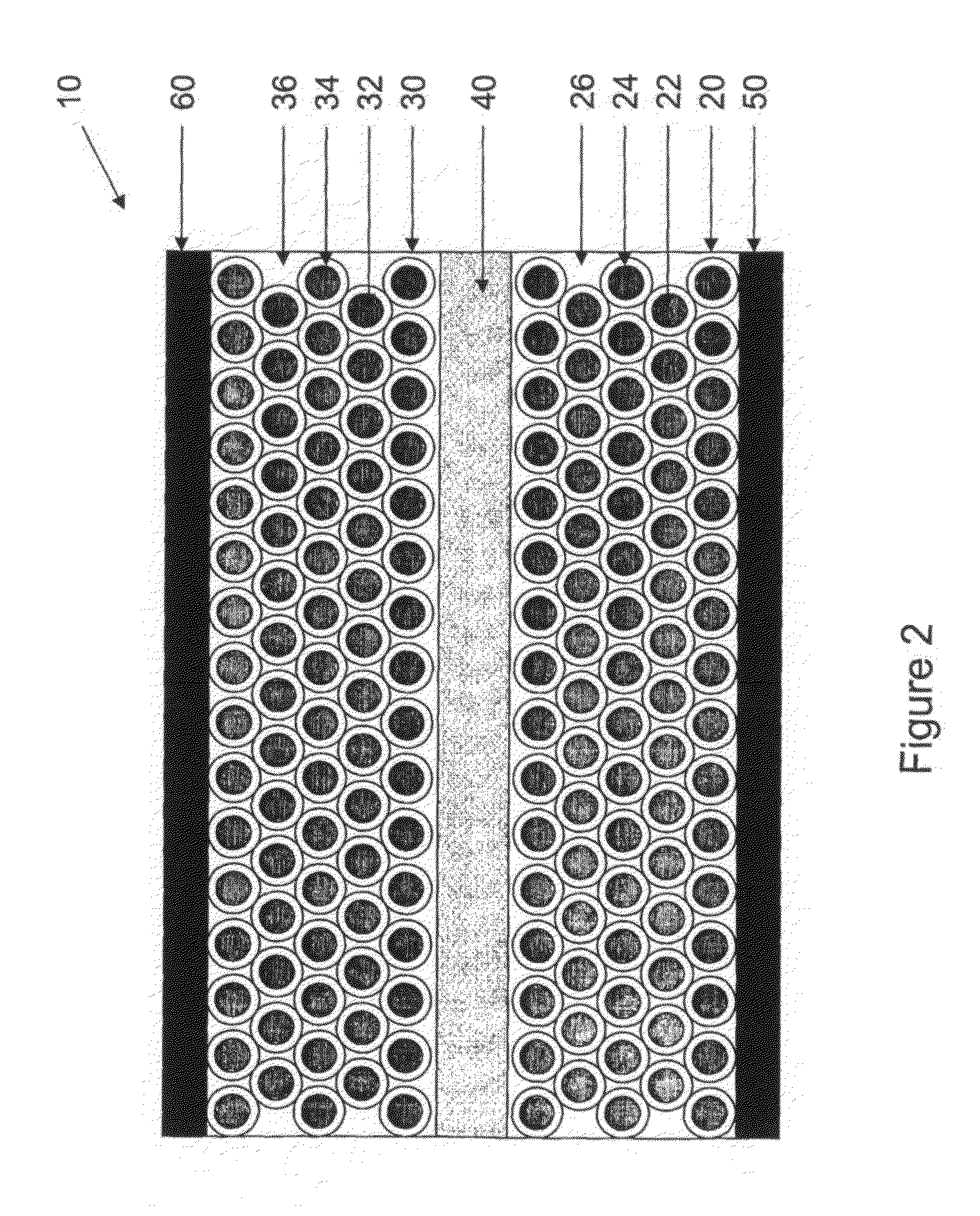Core-shell nanoparticles in electronic battery applications
a technology of electronic batteries and nanoparticles, which is applied in the field of solid-state energy storage devices, can solve the problems of limited cycle life of rechargeable batteries, structural changes in active electrode materials, and the supercapacitor does not always scale, so as to reduce the effective surface area, reduce the cycle life and peak power output, and compromise the cycle life and/or capacitance of capacitors.
- Summary
- Abstract
- Description
- Claims
- Application Information
AI Technical Summary
Benefits of technology
Problems solved by technology
Method used
Image
Examples
Embodiment Construction
[0049]A schematic of the cell structure of an electronic battery according to the current invention is shown in FIG. 2. The cell comprises the conventional electrochemical capacitor structure (not shown): two electrodes 20, 30 are separated by a region that contains only electrolyte 40 and are provided with current collectors 50, 60 on their opposing faces. Preferred electrolytes 40 include materials that contain mobile ions of lithium, sodium, potassium, hydrogen (both H+ and H−), copper and / or silver and can take the form of an aqueous solution of a dissolved ionic chemical compound (or compounds), a non-aqueous solution of a dissolved ionic chemical compound (or compounds), a polymer electrolyte, a gel electrolyte, a solid electrolyte or a molten salt electrolyte. In cases where the electrolyte 40 is a liquid or a gel, it should contain a porous non-conductive solid to prevent the two conductive electrodes 20, 30 from shorting together, since it is advantageous that the gap betwe...
PUM
| Property | Measurement | Unit |
|---|---|---|
| diameter | aaaaa | aaaaa |
| energy density | aaaaa | aaaaa |
| specific energies | aaaaa | aaaaa |
Abstract
Description
Claims
Application Information
 Login to View More
Login to View More - R&D
- Intellectual Property
- Life Sciences
- Materials
- Tech Scout
- Unparalleled Data Quality
- Higher Quality Content
- 60% Fewer Hallucinations
Browse by: Latest US Patents, China's latest patents, Technical Efficacy Thesaurus, Application Domain, Technology Topic, Popular Technical Reports.
© 2025 PatSnap. All rights reserved.Legal|Privacy policy|Modern Slavery Act Transparency Statement|Sitemap|About US| Contact US: help@patsnap.com



